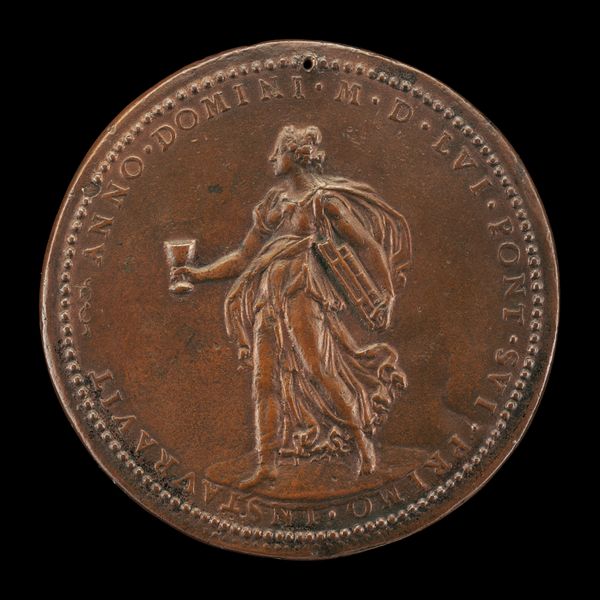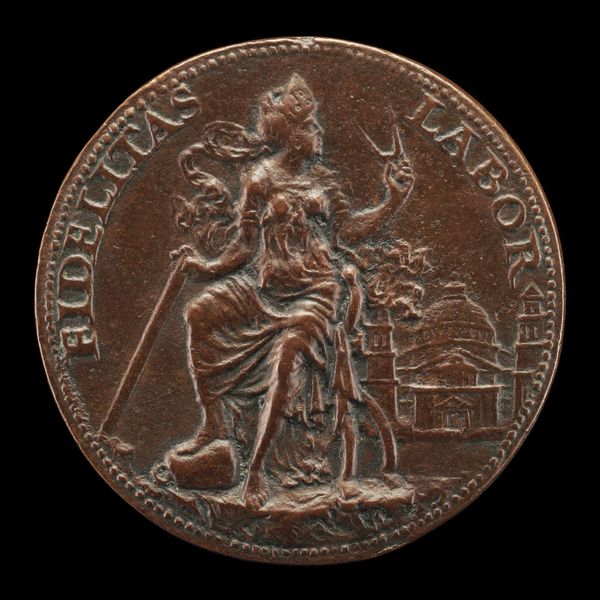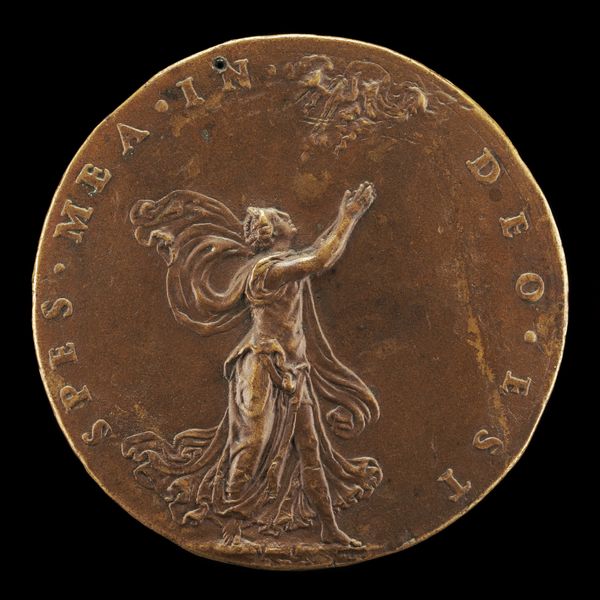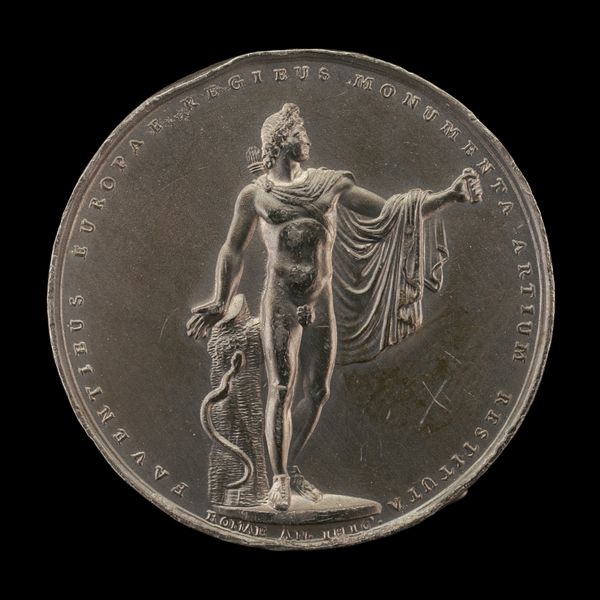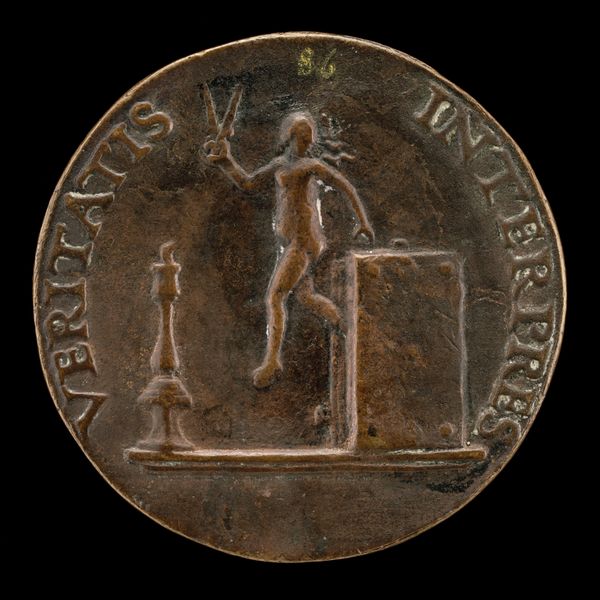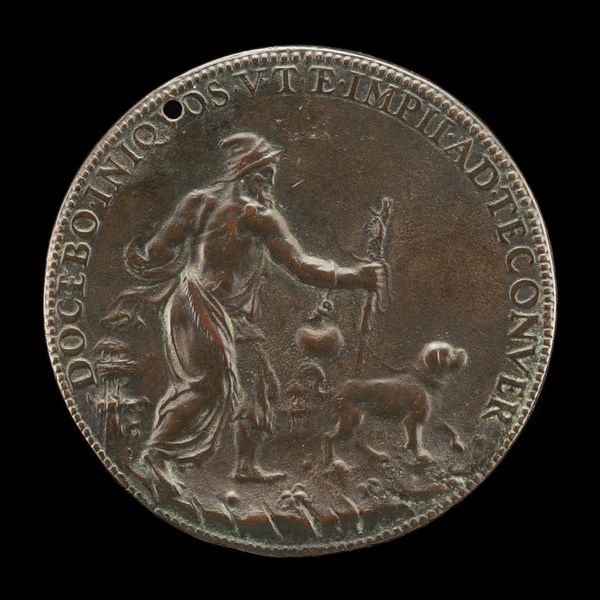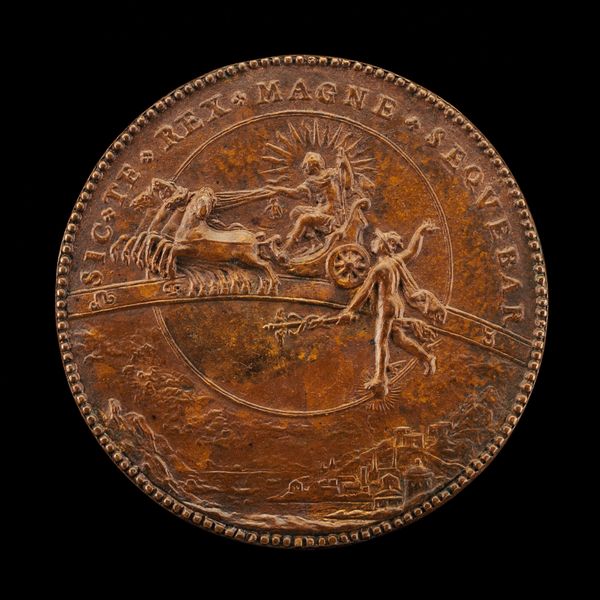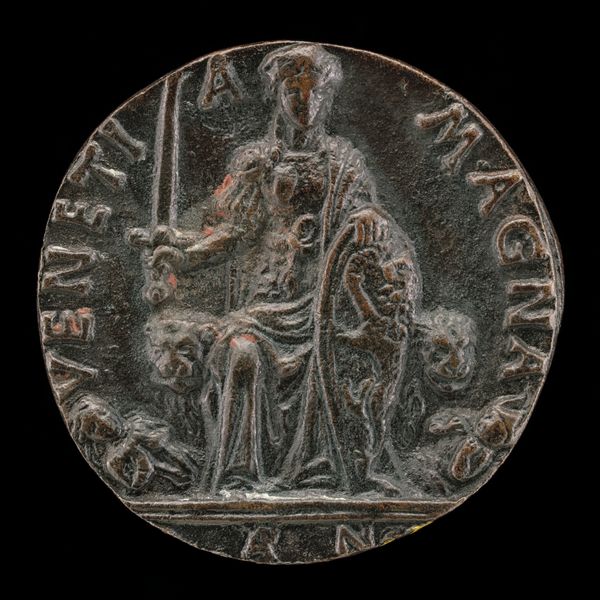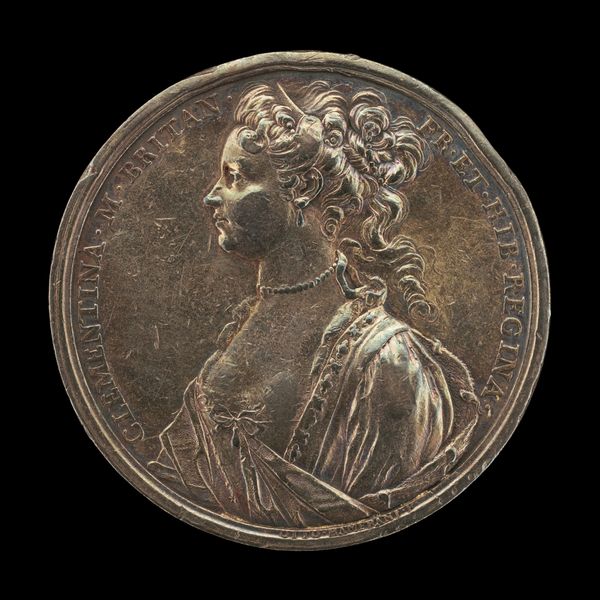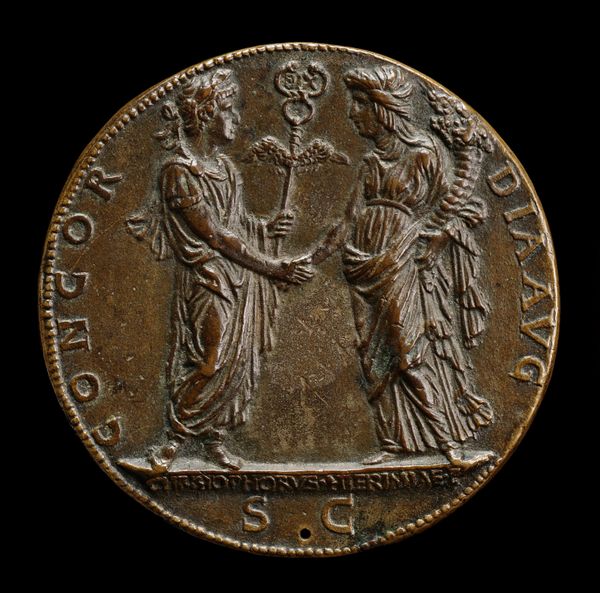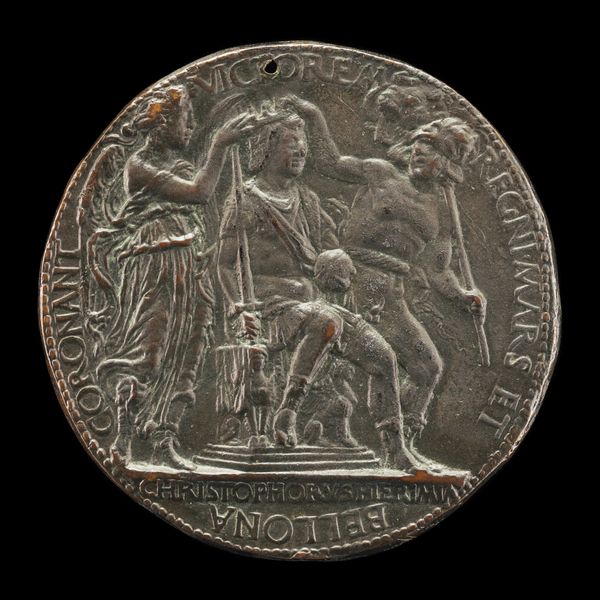![Prudence Standing between Water and Fire [reverse] by Bartolommeo Melioli](/_next/image?url=https%3A%2F%2Fd2w8kbdekdi1gv.cloudfront.net%2FeyJidWNrZXQiOiAiYXJ0ZXJhLWltYWdlcy1idWNrZXQiLCAia2V5IjogImFydHdvcmtzLzdkYzFlYmRhLTRlNjUtNDg3OC04MDQ0LTUxZmMzMWI3NGFjNC83ZGMxZWJkYS00ZTY1LTQ4NzgtODA0NC01MWZjMzFiNzRhYzRfZnVsbC5qcGciLCAiZWRpdHMiOiB7InJlc2l6ZSI6IHsid2lkdGgiOiAxOTIwLCAiaGVpZ2h0IjogMTkyMCwgImZpdCI6ICJpbnNpZGUifX19&w=3840&q=75)
Prudence Standing between Water and Fire [reverse] c. 1480
0:00
0:00
relief, bronze, sculpture
#
portrait
#
stone
#
sculpture
#
relief
#
bronze
#
figuration
#
sculpture
#
history-painting
#
italian-renaissance
Dimensions: overall (diameter): 7.14 cm (2 13/16 in.) gross weight: 111.43 gr (0.246 lb.) axis: 12:00
Copyright: National Gallery of Art: CC0 1.0
Editor: Here we have a bronze relief sculpture, "Prudence Standing between Water and Fire [reverse]", created around 1480 by Bartolommeo Melioli. It has a classical feel. I’m really intrigued by the figure—she's clearly the focus, but also, water and fire are explicitly part of the composition. What symbolic meanings do you see being conveyed? Curator: The figure certainly dominates the scene. What strikes me immediately is the juxtaposition of seemingly contradictory symbols. Note how the figure of Prudence is quite literally positioned *between* water and fire. Melioli employs powerful opposing forces to articulate a central theme. Look closer at what she is holding. Editor: It looks like she’s holding a sort of basket…or…is that an Antinoos knot? Curator: Precisely! The basket suggests restraint and measurement, a container for passions. The placement between fire and water suggests the tempering of these raw elements. How might the inscription contribute to the symbol's narrative, especially in the context of the Italian Renaissance? Editor: "ADOLESCENTIAE AVGVSTAE" inscribed around the edge must point to a specific individual, likely a youthful member of nobility who wanted to project an image of wise leadership and prudence? So the sculpture acted as a message of their own capacity for tempered governance? Curator: An excellent point! Renaissance art often functioned to embody values through the interplay of classical and humanist symbols. The selection and arrangement carry profound cultural weight beyond simple decoration. The capacity for ‘prudence’ isn't just portrayed, it’s actively performed through visual and cultural language. Editor: This really gives me a lot to consider in how symbolism was deliberately employed! I hadn’t thought of Renaissance art as actively *performing* certain traits. Curator: Yes! And exploring these coded visual languages will continue to enrich your study of art from this era.
Comments
No comments
Be the first to comment and join the conversation on the ultimate creative platform.
